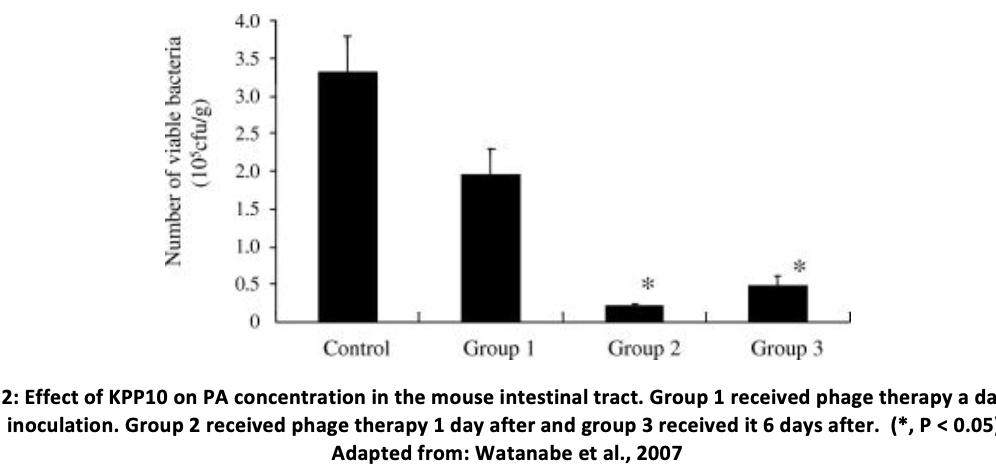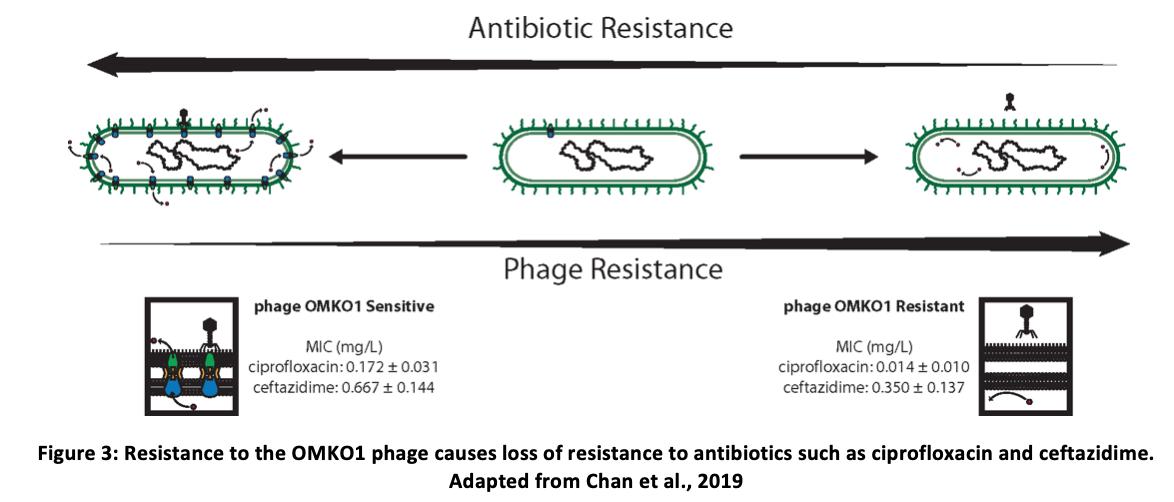
9 minute read
Phage Therapy
Phage Therapy: Its Uses and Flaws Pertaining to Pseudomonas aeruginosa Infections
Dr. Rodianne Abela M.D.(Melit),F.R.C.Path.(UK)
Advertisement
Tutor
Dr. Christopher Barbara Chairman of the Mater Dei Pathology Department M.D.,M. Sc.(Lond.),D.L.S.H.T.M.
As cases of antibiotic resistant bacteria increase, possible alternatives to antibiotics have often been sought. One alternative discussed in literature is phage therapy. While this procedure has been studied for many decades, there is still much to learn for such a practice to become commonplace. For the purpose of this review, Pseudomonas aeruginosa will be discussed, since it often exhibits antibiotic resistance in hospitals. Phage Therapy Explained Bacteriophages are the most abundant ‘organisms’ on Earth.Phages are viruses that specifically attach to and infect bacteria. Each virus is specific to a particular strain/s of the bacterium and can either be lytic (infects and kills the cell) or lysogenic (incorporating its genetic material into the genetic material of the bacteria) (Clokie et al., 2011). Bacteriophages are an extremely diverse group of viruses with vastly different morphologies and families. While siphoviruses, for example, have no envelopes and have long tails, ampullaviruses are enveloped and bottle-shaped (Kulikov et al., 2007). Phage therapy targets bacterial infections in the body by making use of bacteriophages (Lin et al., 2017).The process was discussed as far back as 1915 (Twort., 1915) but following the discovery of penicillin, research was mostly stopped except in the Soviet Union and Eastern Europe, where it has occasionally been used (Wittebole et al., 2013). Only lytic bacteriophages (i.e. those that cause quick bacterial cell death) are used in phage therapy. Lysogenic phages make their genetic material available to the bacteria to be transcribed. Such genes may actually help the bacteria by producing virulence factors (like botulinum toxin) or antibiotic resistance genes (Ohnishi et al., 2001). Advantages of Phage Therapy over Antibiotic Treatment Phage therapy has a number of strengths over antibiotics. Primarily, they are very specific to one or a few bacterial strains that carry their complement receptor and will not attack other important bacteria such as gut flora. Therefore, side effects are typically minimal and chances of opportunistic infections are reduced.Phages are mostly proteins and nucleic acids and are therefore nontoxic (Loc-Carrillo et al., 2011). They also self-amplify (so very small doses are needed) and are very useful in biofilm degradation (Donlan., 2009).Phages can be administered in many different ways and are versatile even with regards to formulation development. They are easy to discover as they are usually found in waste products with high bacterial concentrations (Kutateladze et al.,
Immediate Problems Associated with Phage Therapy The specificity of phagescan sometimes be problematic since the strain of bacteria must be specific too and thus, a ‘phage cocktail’ of multiple phages is often used to ensure adequate treatment (Watanabe et al., 2006). Phagescan sometimes cause immune system activation including possible cytokine release though little evidence exists that this could happen during phage therapy. Still, in order to prevent anaphylaxis, highly purified phages must be prepared and complete isolation of bacteriophages can be difficult (Loc-Carrillo et al., 2011). P.aeruginosaInfection Characteristics Pseudomonas aeruginosa (PA) is a gramnegative, opportunistic, environmental pathogen. It especially infects patients in hospitals and can be a life-threatening infection since some strains have shown resistance to a large number of antibiotics(CDC., 2019).It can lead to infection of critical body organs, as well as sepsis and is notably often found in patients suffering from cystic fibrosis. (Rossitto et al., 2018). The infection is also associated with mechanical heart valves, grafts, sutures and catheter-associated urinary tract infections. The bacterium can survive on many different environmental surfaces (Remold et al., 2011) andresistance to antibiotics has been linked to increased hospital stay and morbidity (de Kraker et al., 2011). PA owes its antibiotic resistance to a series of multi-drug efflux (Mex) systems which pump antibiotics out of the bacterial cell (Masuda et al., 2000). into the mediastinal fistula. The next day, the patient had improved markedly and soon was able to return home. Biofilms grown with P.aeruginosa isolated from the graft showed that treatment with OMKO1 both alone and with antibiotic significantly reduced bacterial densities compared to the antibiotic alone. (Chan et al., 2019). PA phage therapy has also been successfully used to prevent intestinal colonisation and overgrowth in young children in Georgia (Chanishvili et al., 2008) as well as prevention and degradation of biofilm in a hospital setting (Motlagh et al., 2016).5 podoviruses and a myovirus have also been used to treat chronic otitis infections with no observed serious side effects (Kutter et al., 2010). Another study showed that fish embryos infected with P.aeruginosa showed a strong reduction in lethality when administered both phages and ciprofloxacin compared to either one of the two (Cafora et al., 2019). Yet another bacteriophage (KPP10) was administered to mice suffering from gut-derived sepsis due to PA. Intravenous and intraperitoneal administration were found to be more effective but whilst KPP10 did reduce mortality, it did so best if administered 1 day after inoculation with the bacteria (Watanabe et al., 2007).

Using Phage Therapy to Treat PA Infections Phage therapy has shown mixed results when applied to PA infections. Phage OMKO1 is an example of a bacteriophage targeting PA. It uses the outermembrane protein M associated with the multidrug efflux systems MexAB and MexXY to bind to its host. One study involved an aortic graft infected with PA. Following endotoxin removal from the phage solution, 10 ml of phage OMKO1 (10e7 PFU/ml) and ceftazidime (0.2 g/ml) solution was administered That being said, phage resistance has often been put forward as a possible problem associated with phage therapy. Indeed, OMKO1 binding to its MexAB and MexXY systems pushes for selection of bacteria to evolve phage resistance. However, a study did note that such resistance actually causes changes in the Mex systems causing the bacterium to lose some
antibiotic resistance. As such, a bacteriophage cocktail administered with an antibiotic is ideal (Chan et al., 2016). Another approach involves the isolation of endolysins like artylisins from bacteriophages. Once again, this has been shown to kill PA in situ (Briers et al., 2014).
Whilst so far, most studies on phage therapy have been case studies carried out in Eastern Europe, the European Commission is now funding a project called ‘Phagoburn’ which will be organising the world’s first multicentre, randomised controlled trials (Phagoburn., 2019). The first such study took place with patients who had infected burn wounds. A phage cocktail or PP1131 was found not to be as effective as silver sulfadiazine at treating the wound. That being said, the therapy was also associated with less side effects than the silver sulfadiazine. It is possible that this negative result was obtained because too little phage was used. More research is required (Jault et al., 2019).

Discussion: Phage therapy certainly has the potential to become a more commonplace procedure in infection treatment. That being said, a lot more research (especially controlled, unbiased trials) in the field is merited. Whilst most research traditionally took place in Eastern Europe, researchers in countries like the United States (Furr et al., 2018) and Belgium (Jennes et al., 2017) are also seriously beginning to take an interest. Only further study about safety concerns, costs and efficacy of phage therapy can lead to the possibility of such a procedure becoming more mainstream.
References: 1. Briers Y, Walmagh M, Van Puyenbroeck V, Cornelissen A, Cenens W, Aertsen A et al. Engineered Endolysin-Based “Artilysins” To Combat Multidrug-Resistant Gram-Negative Pathogens. mBio. 2014;5(4). 2. Cafora M, Deflorian G, Forti F, Ferrari L, Binelli G, Briani F et al. Phage therapy against Pseudomonas aeruginosa infections in a cystic fibrosis zebrafish model. Scientific Reports. 2019;9(1). 3. Chan B, Sistrom M, Wertz J, Kortright K, Narayan D, Turner P. Phage selection restores antibiotic sensitivity in MDR Pseudomonas aeruginosa. Scientific Reports. 2016;6(1). 4. Chan B, Turner P, Kim S, Mojibian H, Elefteriades J, Narayan D. Publisher’s Note: Phage treatment of an aortic graft infected with Pseudomonas aeruginosa. Evolution, Medicine, and Public Health. 2019;2019(1):35. 5. Chanishvili N, Sharp R. Bacteriophage therapy: experience from the Eliava Institute, Georgia. MICROBIOLOGY AUSTRALIA. 2008;May:96-101. 6. Clokie, M., Millard, A., Letarov, A. and Heaphy, S. (2011). Phages in nature. Bacteriophage, 1(1), pp.31-45. 7. deKraker M, Wolkewitz M, Davey P, Grundmann H. Clinical Impact of Antimicrobial Resistance in European Hospitals: Excess Mortality and Length of Hospital Stay Related to Methicillin-ResistantStaphylococcusaureusBloodstream Infections. Antimicrobial Agents and Chemotherapy. 2011;55(4):1598-1605. 8. Donlan R. Preventing biofilms of clinically relevant organisms using bacteriophage. Trends in Microbiology. 2009;17(2):66-72. 9. Furr C, Lehman S, Morales S, Rosas F, Gaidamaka A, Bilinsky I et al. P084 Bacteriophage treatment of multidrug-resistant Pseudomonas aeruginosa pneumonia in a cystic fibrosis patient. Journal of Cystic Fibrosis. 2018;17:S83. 10. Jault P, Leclerc T, Jennes S, Pirnay J, Que Y, Resch G et al. Efficacy and tolerability of a cocktail of bacteriophages to treat burn wounds infected by Pseudomonas aeruginosa (PhagoBurn): a randomised, controlled, double-blind phase 1/2 trial. The Lancet Infectious Diseases. 2019;19(1):35-45. 11. Jennes S, Merabishvili M, Soentjens P, Pang K, Rose T, Keersebilck E et al. Use of bacteriophages in the treatment of colistin-only-sensitive Pseudomonas aeruginosa septicaemia in a patient with acute kidney injury—a case report. Critical Care. 2017;21(1). 12. Kulikov E, Isaeva A, Rotkina A, Manykin A, Letarov A. Diversity and dynamics of bacteriophages in horse feces. Microbiology. 2007;76(2):236-242. 13. Kutateladze M, Adamia R. Bacteriophages as potential new therapeutics to replace or supplement antibiotics. Trends in Biotechnology. 2010;28(12):591-595. 14. Kutter E, De Vos D, Gvasalia G, Alavidze Z, Gogokhia L, Kuhl S et al. Phage Therapy in Clinical Practice: Treatment of Human Infections. Current Pharmaceutical Biotechnology. 2010;11(1):69-86. 15. Lin D, Koskella B, Lin H. Phage therapy: An alternative to antibiotics in the age of multi-drug resistance. World Journal of Gastrointestinal Pharmacology and Therapeutics. 2017;8(3):162. 16. Loc-Carrillo C, Abedon S. Pros and cons of phage therapy. Bacteriophage. 2011;1(2):111-114. 17. Masuda N, Sakagawa E, Ohya S, Gotoh N, Tsujimoto H, Nishino T. Substrate Specificities of MexAB-OprM, MexCD-OprJ, and MexXY-OprM Efflux Pumps in Pseudomonas aeruginosa. Antimicrobial Agents and Chemotherapy. 2000;44(12):3322-3327. 18. Motlagh A, Bhattacharjee A, Goel R. Biofilm control with natural and genetically-modified phages. World Journal of Microbiology and Biotechnology. 2016;32(4). 19. Ohnishi M, Kurokawa K, Hayashi T. Diversification of Escherichia coli genomes: are bacteriophages the major contributors?. Trends in Microbiology. 2001;9(10):481-485. 20. Phagoburn: Evaluation of phage therapy for the treatment of burn wound infections [Internet]. Phagoburn. eu. 2019 [cited 27 October 2019]. Available from: http://www.phagoburn.eu/ 21. Pseudomonas aeruginosa in Healthcare Settings | HAI | CDC [Internet]. Cdc.gov. 2019 [cited 27 October 2019]. Available from: https://www.cdc.gov/hai/organisms/pseudomonas.html#types 22. Remold S, Brown C, Farris J, Hundley T, Perpich J, Purdy M. Differential Habitat Use and Niche Partitioning by Pseudomonas Species in Human Homes. Microbial Ecology. 2011;62(3):505-517. 23. Rossitto M, Fiscarelli E, Rosati P. Challenges and Promises for Planning Future Clinical Research Into Bacteriophage Therapy Against Pseudomonas aeruginosa in Cystic Fibrosis. An Argumentative Review. Frontiers in Microbiology. 2018;9. 24. Twort F. AN INVESTIGATION ON THE NATURE OF ULTRA-MICROSCOPIC VIRUSES. The Lancet. 1915;186(4814):1241-1243. 25. Watanabe R, Matsumoto T, Sano G, Ishii Y, Tateda K, Sumiyama Y et al. Efficacy of Bacteriophage Therapy against Gut-Derived Sepsis Caused by Pseudomonas aeruginosa in Mice. Antimicrobial Agents and Chemotherapy. 2006;51(2):446-452. 26. Watanabe R, Matsumoto T, Sano G, Ishii Y, Tateda K, Sumiyama Y et al. Efficacy of Bacteriophage Therapy against Gut-Derived Sepsis Caused by Pseudomonas aeruginosa in Mice. Antimicrobial Agents and Chemotherapy. 2007;51(2):446-452. 27. Wittebole X, De Roock S, Opal S. A historical overview of bacteriophage therapy as an alternative to antibiotics for the treatment of bacterial pathogens. Virulence. 2013;5(1):226-235.

Miguel Vella 3rd Year Medical Student at the Faculty of Medicine & Surgery, University of Malta.











